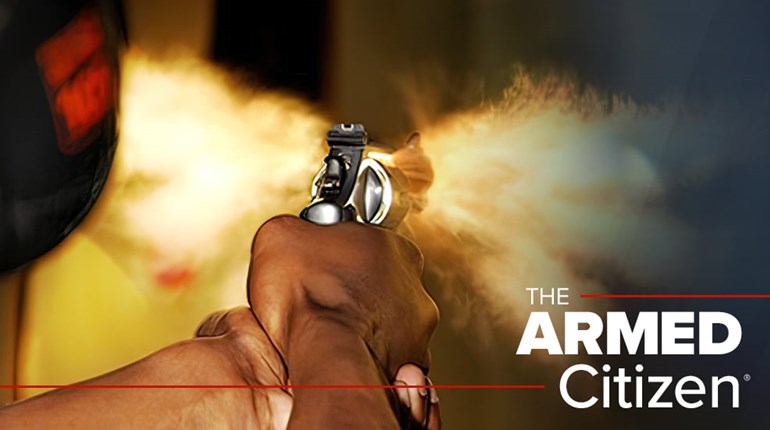
Many readers will recognize that for our title—not exactly for the first time, either—we’ve borrowed from Robert Ruark. The noted novelist coined the term in several usages, though he was unquestionably thinking in terms of African dangerous game. While a Rigby or Holland & Holland is an unlikely candidate for any Carry Life context, the larger notion remains apt to our considerations. It’s a fine turn of phrase, too—none the worse for wear, or repurposing.
That repurposing is in the form of an admonition: As much as we understand the urge to carry the smallest firearm you can readily obtain, we see an awful lot of struggling with those itty bitties. It’s time to get a grip, so to speak, on what may be too much of a good thing—or, more precisely, too little.
We grant we’ve reviewed or referenced some of these for you: S&W MP Shield vs. Glock 43, Glock 42 vs. M&P Bodyguard, and the Kimber Ultra CDP II, though you can find many others in our pages as well. We’ve also spent a good deal of digital/literal ink on techniques for carry-class arms (here, here and here—with former Navy SEAL Jeff Gonzales). We think these are fine pistols and, with due consideration, good options for carry.

But here’s the rub: Ongoing questions and teaching make it utterly clear there is more that needs to be said. Specifically, wardrobe, climate, even legal considerations may be important drivers of a firearm choice, but they should never—mark that word never—induce you to buy a pistol you can’t run. You’re better off delaying a choice until you can make it wisely.
We suggest that both “run” and “wise” break down along these lines:
Power
We discussed many aspects of this recently in considerations of “+P” ammunition—fodder (usually) for handguns that run above standard pressures in order to create more downrange energy. Such ammo posits advantages: Each shot, in theory, is more effective because fight-ending, per-shot effectiveness goes up.
The downside of +P loadings seldom takes more than a single pull of the trigger to discover, however: It turns many small firearms into recoil beasts. Particularly for inexperienced shooters, the fun disappears in a quite-literal flash, and along with it developing and perhaps delicate confidence. (Just for the record, there is a transcendentally stupid and dangerous variation on this ill-conceived gag that you may see on YouTube or elsewhere: Giving an inexperienced or unsuspecting shooter this version of “too much” gun. Sooooo not funny.)
The recoil/power relationship matters in another, more conventional sense that is best illustrated by example. There’s no way to make a .45 ACP run as softly as a carefully chosen .380 ACP. Nevertheless, you couldn’t equate the latter’s actual stopping power with that of the former: A smallish .45 is a formidable deterrent, but difficult to master. Too much power hampers skills development, period.

Feel
Actual power gets easily transmogrified in another unhelpful wrangle—that of “feel,” or what might loosely be called perceived power. It’s largely inscrutable to newish shooters except in “ouch” and “not ouch” terms, and mingled factors beyond numerical cartridge oomph often keep it bewildering. Sure, the forces can be quantified (recoil and free recoil are two ways to look at it), but that knowledge is unhelpful in practical terms; ergonomic differences in hands, musculature, stature and technique see to that. Worse still are the counterintuitive variations that must simply be experienced. That “nice, light .357” (that kicks like a mule!) is probably the most widely known example, but there are certainly others.
This is where impressions and anecdotes—often from movies or television—do added harm. Once again, the tide seems to run toward optimizing “small and light,” while “fight-ending” gets short-changed.
Carry Method
The complexities we’re talking about really coalesce when how you’re planning to carry enters the selection process. For openers, what a man can indeed hide at the waist with reasoned clothing choices, especially with a cover garment, is quite different than what a women—however determined and capable, and through no fault of her own—can practically undertake. Unless she’s going to carry off-body (with all the other problems this entails), she’ll rapidly discover that only tactical couture is up to the weight of many supposed “carry” firearms, to say nothing of the resulting carry being suitably discreet on her likely smaller frame. However well she shoots a “big dog” gun or caliber, the final choice may be rapidly overtaken by the dictates of her day-to-day. Sigh.

Yet again, we’re all but driven to a smaller firearm.
Controls
“How hard can it be? Safety, trigger, done, right?” Well, no, though it’s a problem you may not appreciate until you’ve seen manipulations—or actual shots—go badly wrong. The cramped dimensions of many otherwise excellent small firearms make them poor choices, especially for the new carry practitioner. Too little “real estate” on your pistol is just as big a barrier to skills development as we suggested too much power was.
But therein may be a gleam of hope, truth and even a solution when it comes to choosing a concealed-carry arm. If it has the disadvantage of seeming to be back where we started, we concede.
Our resulting prescription is a simple one: Don’t buy anything you haven’t shot, especially if it’s a small pistol. Don’t get rushed into a purchase by a person, advertisement or impression. The implications of getting it wrong—if only in terms of wasted money—just aren’t worth it. They go (further) downhill if you’re unlucky enough to choose something with hidden “gotchas,” discovered when it matters most.
There is good news. Look at our photos, and you’ll see some favorites. Twenty-plus years ago—coincident with the arrival of “shall-issue” permitted carry where we lived—we went through nearly a dozen pistols in short order, and that’s how our “uh-oh” criteria emerged. The pistols we tried ranged from an “Officer’s Model” 1911 in .45 ACP, with stopping power galore, all the way down to the tiny Walther TPH (in .22 LR) that could hide in most swimming suits (stainless, after all, and sealed fodder). In the end, only the Glock 19 made our cut: The others were all good in some ways, but … you get the idea.

These days, we’d add at least half a dozen more from several manufacturers. After reliability—no matter how cool, nothing and nobody gets to skate on that one—only maintainability is non-negotiable, and we’ll settle for easy DIY, or just not needing any of consequence in, say, a 20K duty cycle. (That’s a hint to some manufacturers, and you know who you are: Trust your customers, and put those parts out there!). If you’re scratching your head wondering where accuracy went in our hierarchy, the answer is “nowhere.” With any of the pistols we’ve tested in the last several years, we simply don’t see accuracy issues at defensive distances with remotely appropriate ammo, provided that technique doesn’t fold.
That last bit is where it all comes together. You may someday decide that a .380 ACP or even a .22 LR micro-gun fits a specific carry need; that can be just fine. Better with than without. But don’t start there. When we got to the G19 all those years ago, it was because it required no technique compromises, because it could handle sufficiently powerful ammunition without blowing up our technique, and because it could be carried in an acceptable variety of methods to suit varying wardrobes and seasons.
Anything you choose now should fit those same criteria: “Enough gun” to shoot well first, and then Carry on.
































